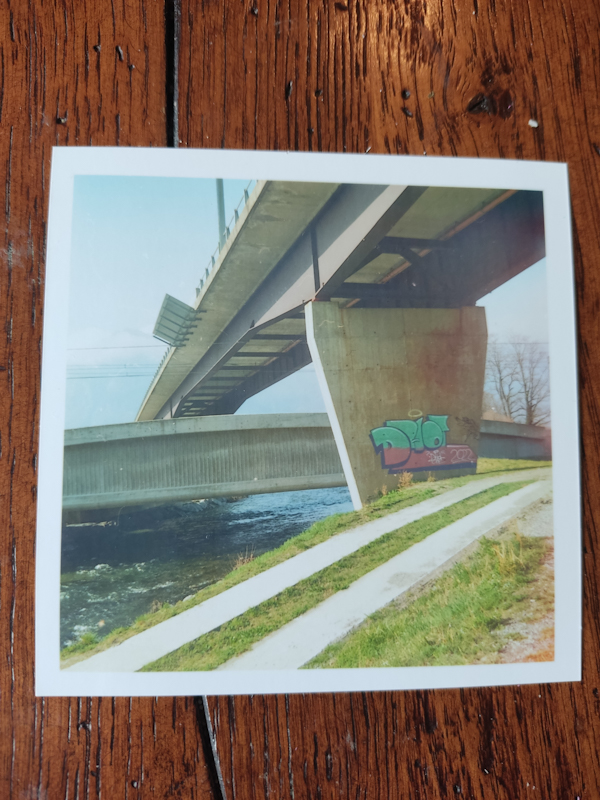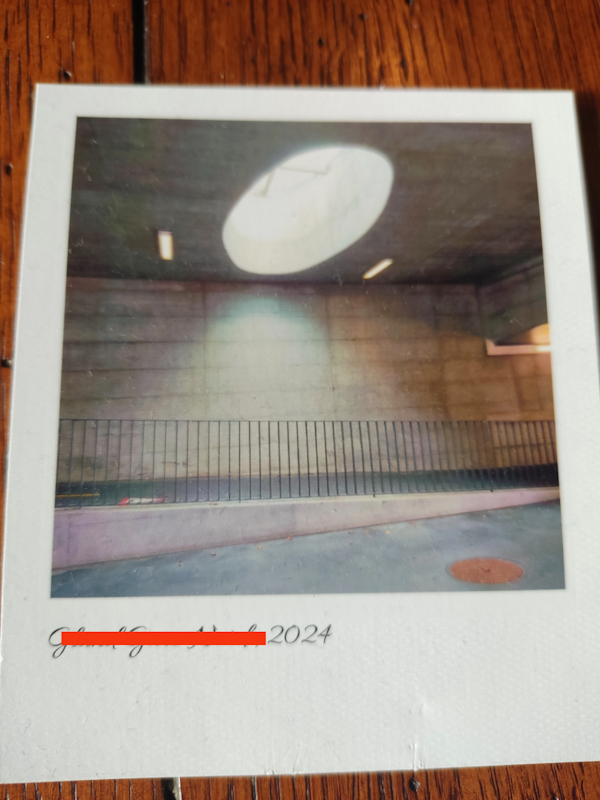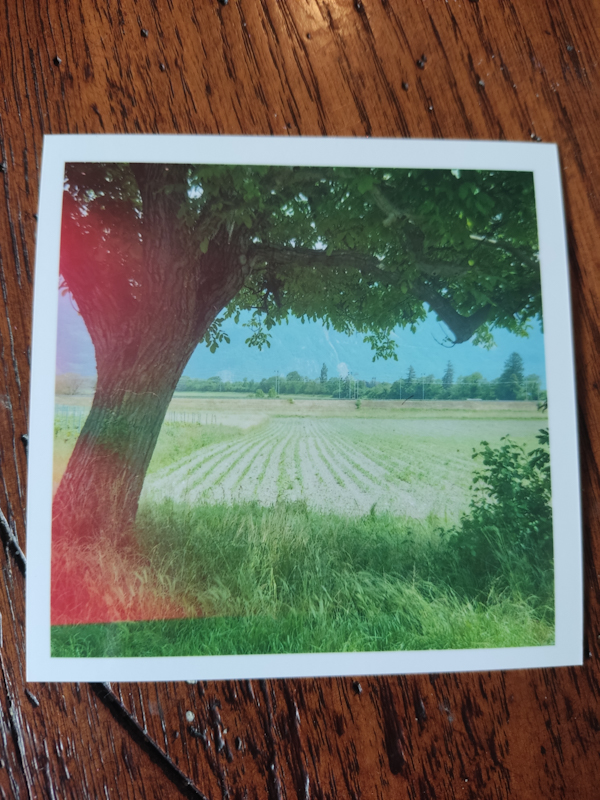Your cart is currently empty!
Tag: TLRs

Ikoflex II – Example Images
I have really enjoyed using my Ikoflex II (851/16), I think mainly for the square image format, but secretly, also for the joy of taking out into public such a beautiful camera.
The square image format means that you need to switch in your mind your field of view. I found this transition reasonably easy to do, although you might disagree once you have seen my pictures! Essentially, you need to fill more frame, and this leads to compositions that were not possible before, and are also a little rarer on the internet due to the lower numbers of square shooters.
Unfortunately, you are restricted to one lens with this camera, a Tessar 75mm 3.5 aperture. Whilst this is a great lens, there are some shots that I know it will struggle with, such as the poppy in my “Yvorne” print below.

Yvorne, Switzerland – Red Poppy Fine Art Swiss Alps Photography Print
Size: 21cm x 30cm, 8.3inches x 11.7inches, Frame: Print only
CHF 40.00This was taken with a 50mm manual focus lens on a digital crop sensor body, so closer to 75mm on a 35mm. Of course, on medium format, the lens you would actually need would be around a 110mm, based on this forum post (https://www.photo.net/forums/topic/330951-6×7-equivalent-focal-lengths-in-35mm/). So with the standard Ikoflex II lens, flowers would be very much smaller at the same distance. The reason I’m saying this is that although I love my TLR, I do need another camera to be providing other focal lengths.
Then of course there are times when you need to go wider. But as long as you are not trying to replicate a shot taken on another camera, ie. your camera phone on a square setting, then you should be able to get some pretty nice shots. Below I show a comparison between a camera phone pic, and my “replication” on medium format. The medium format shot needed to be cropped heavily.

Here’s another comparison. This time I changed the scene composition slightly from the phone shot to the medium format. I also had to step back a lot further.

For portraits, this camera is quite difficult. I think its main issue is the focusing lever. Although the focusing lever is art deco gorgeous, I would probably get the dial given another opportunity. It’s just very difficult to make micro movements. Plus, it continually comes loose, meaning I have to re-tighten with my fingernail.For detail, medium format is a big step up from 35mm. I couldn’t believe when I got the shot below scanned. It was popping out at me. The detail on the roof was just jaw dropping.

Then there is the film you pick. With Portra 800, you get a lot of wiggle room. But you can also overexpose to get somewhat of a pastel look, which I think I have a bit of in the image below. (These are all just small, regular, glossy prints from Cewe, with no ICC profiles used. I expect them to look a lot better when I get ICC enabled prints made from The Print Space).

Of course, with these old cameras, there is often at least a small issue. On this particular camera, it is red light leaks, as you can see from the images below. It seems to arrive when the light is particularly strong. I could alter this, but in fact, I quite like the added effect sometimes.


So that is a brief run through some examples images on my Ikoflex II. Some of the above will definitely be making it to larger print, although I may try to get them rescanned on a Noritsu 1800 available at Quick Photo in Geneva, as opposed to scanning on my Epson v700.
I’ll leave you with a couple of further shots:



Ikoflex II (851/16)
Well, whilst I am in the path of retracting from virtual tech, I have to say that manual tech I am still very much interested in, with the Zeiss Ikoflex II (851/16) being case in point.
Having initially bought an Olympus AZ-200 Super Zoom for my first foray into carryable film cameras ( I actually started at the deep end with an Large Format Sinar Norma 5×7), I soon lusted after larger again, as if this was something important. It hurt to think that I was taking pictures that could have been larger. Thus, I began medium format research. I knew from large format that handheld should be kind of possible with medium format, but my funds were limited. I eventually settled on TLRs, which combined portability with decent but fixed lenses. Rolleiflex are of course the kings here, but they were way out of my budget. However, a little bit of research led me on to the Zeiss Ikoflex. Now, these come in a variety of forms. I opted for the 1936/37 Ikoflex II. The reason for this is I wanted a pre war model as potentially the parts used may have been more durable. Whether this is the case, I am unsure, but it is still working well after a year and a half.
Appearances for this model are nothing short of spectacular, with a deco design that includes an aesthetically wonderful focus lever. It really is quite special to take out and about, and gain curious glances, if that is what you are after.

More importantly (hopefully), how does it use? Well, having not used any other TLR’s so far, it’s hard to make comparisons, but these are my feelings. Shutter and aperture dials work fine, as expected, with a max shutter speed of 500 (not had to use this yet). Aperture on the lens goes from 3.5 to 22, more than reasonable.
The lens is a Tessar. My impressions are from it that it is very nice, if you are after the look it gives, which I am. It is not the sharpest, but I’m really not after that. Colours render nice. However, please keep in mind that I am not a “technical” photographer. I prefer “feel” and “looks” to pixel peeping, which is one of the reasons I moved to film in the first place.
Now, onto the not so good. The focussing lever, which I love from an aesthetic point of view, would really be better served with a focussing dial for faster, more accurate focussing. Perhaps I still need to practice more, but I find focussing of close subjects hard.
Secondly, to fire the shutter, there is another lever, rather than a button. I find that this makes the shooting process a little more intense, and I don’t dare shoot anything lower than 1/60. So that means I’m almost always walking round with Portra 800.
Other issues? Well it’s manual wind. This means you can shoot double exposures if you want, and also means you accidentally shoot double exposures when you don’t want. Eek. Only happened once so far, but disappointing not the less. Also, the lack of an auto wind after each frame means that there is sometimes a little overlap between frames. Also annoying, but also one of those quirks that almost makes you smile, particularly if you hate how easy it is to attain a picture through digital.
Getting your film aligned is a little heart stopping on the first roll. You need to use the red circle underneath the camera, and wind till you reach the first frame. You need good light for this, as it is hard to see. I actually missed my first frame on my first roll, as I skipped past Portra’s 800’s one digit, which kind of looks just like a line. But this is less the cameras fault.
So with these attributes in mind, how has my shooting developed? Well, for landscapes, the camera is brilliant. The square format opens up a whole new way of looking at the world, and the results with the Tessar are dreamy. But people shots are a lot harder. Firstly, with no built in light meter, you need to use an exterior one. I’ve just been using the Android app, Lightmeter, which provides a close-ish match with the camera, even if the focal length is a little different. This immediately slows things down. Then I have to manually set aperture and shutter based on one of the pairs the light meter app gives me (meaning no mental arithmetic – I highly recommend this app). Then I have to use the dreaded focussing lever whilst looking through a mirror that is supposedly one of the brightest as far as TLRs go (I dread to think of using something dimmer). Finally, I cock the shutter, and then slowly pull down the shutter release lever. I can say I have some very nice people results, but I can also quite categorically state that this camera is not for the sport or candid shooter. Due to this, people shots have gradually made way for a lot more landscape shots, as the frustrations of keeping impatient people in place has taken its toll.
Finally, with regards to the camera itself, it is bulky, and slightly heavy, meaning that although portable, I don’t take it everywhere. There is also the element of fear. What if I lose my impeccably sourced little wonder? What should I take when I am just going round the corner? How many times do I still wish I had taken my camera? Well, it’s quite a lot, which tells me that I need to look smaller again.
Where does this leave me? Well, I feel I now need to support my Ikoflex II in some way, with something tiny, that won’t weigh much. Something I can really put in a pocket. That will be the next chapter.